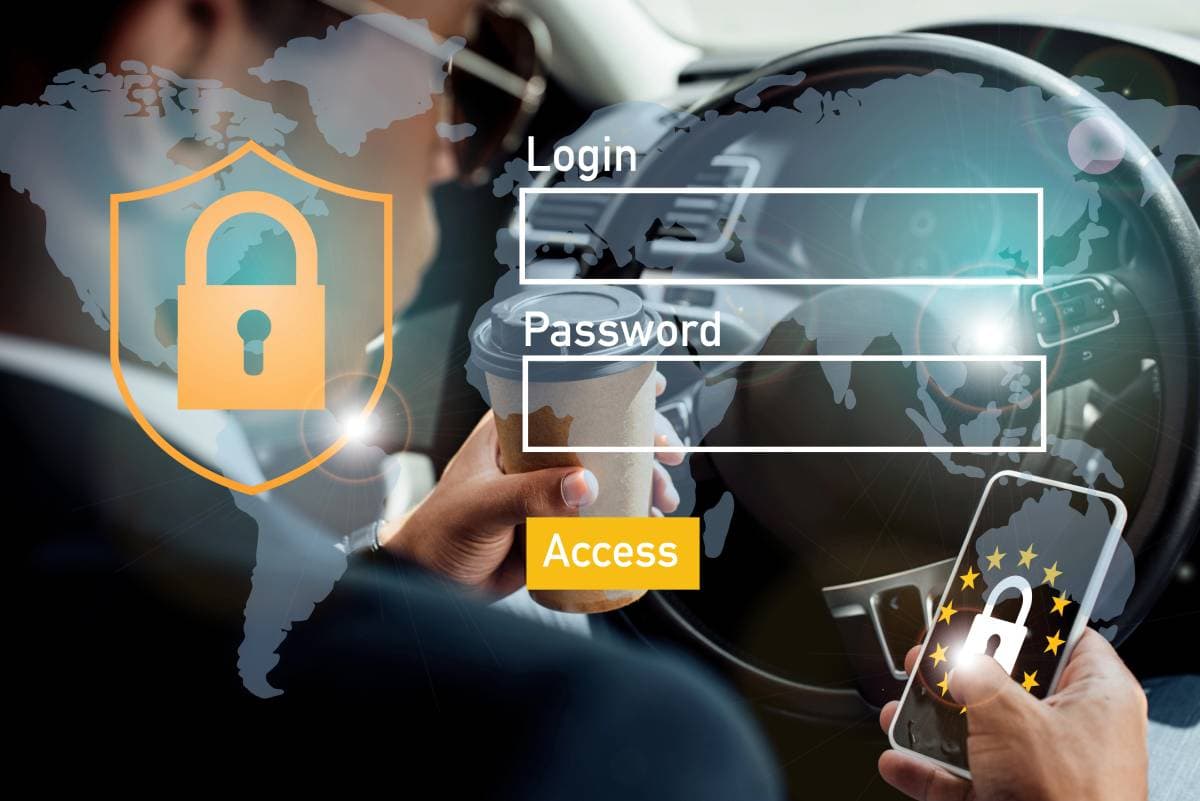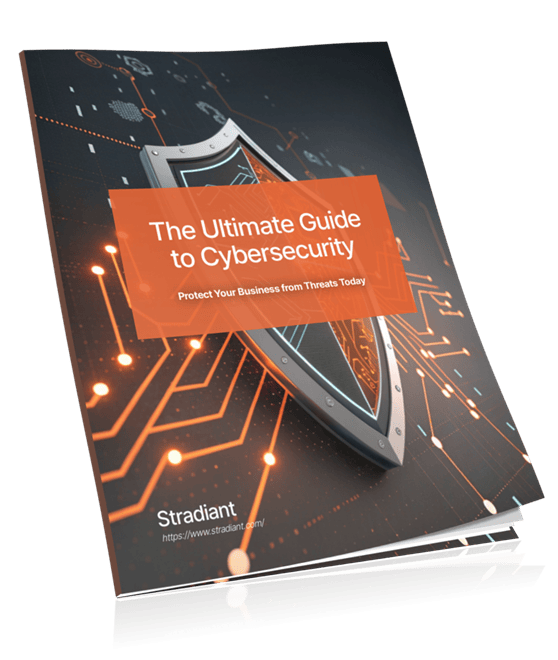Passwords are the first line of defense in protecting business data and systems from unauthorized access. Password security for businesses is not just a technical necessity but a critical component of operational integrity.
Risks of Weak Passwords
Weak passwords can lead to significant risks:
- Data breaches: Easily guessable passwords can be cracked within seconds using dictionary attacks, exposing sensitive company and client information.
- Financial losses: Breaches often result in substantial financial consequences, including direct theft and costs associated with fixing the breach.
- Reputational damage: Loss of trust from clients and partners can have long-term negative impacts on business relationships and market position.
Benefits of Strong Password Policies
Implementing strong password policies serves as a proactive measure against these threats. Policies should require the creation of unique passwords that are complex and difficult to guess.
This approach reduces the likelihood of unauthorized access and strengthens the organization’s overall security posture.
Characteristics of Strong and Complex Passwords
Strong passwords exhibit certain characteristics that make them difficult to guess or crack:
- Length: At least 12-16 characters long.
- Complexity: A mix of uppercase and lowercase letters, numbers, and special characters.
- Uniqueness: Each password should be different for every account.
These attributes ensure that the password cannot be easily deciphered through common hacking techniques like brute force attacks or dictionary attacks.
Common Mistakes in Password Creation
Businesses often fall into pitfalls when creating passwords:
- Using Easily Guessable Information: Personal details such as birthdays, names, or common words.
- Password Reuse: Employing the same password across multiple accounts increases vulnerability.
- Short Passwords: Shorter passwords are easier to crack due to fewer combinations.
Implementing strong password policies and educating employees on these best practices can significantly bolster a company’s cybersecurity posture.
Consequences of Weak Passwords
Weak passwords are a significant vulnerability in the cybersecurity landscape. Data breaches caused by inadequate password security are alarmingly common, with 80% of data breaches in 2019 attributed to compromised credentials.
Statistics Highlighting the Urgency
Average cost of a data breach in the U.S.: $8.64 million
Manufacturing industry: 922 cybersecurity incidents in 2020, with 73% motivated by financial incentives
Compromised data types: credentials (55%), personal information (49%), payment data (20%)
Real-World Examples
Target (2013): A massive breach exposed the personal and financial information of 70 million customers. The root cause? Weak vendor credentials that provided attackers with access to Target’s systems. The financial cost was staggering, reaching over $200 million.
Yahoo (2013-2014): One of the largest breaches in history saw 3 billion accounts compromised due to weak password practices and insufficient encryption. Yahoo faced not only severe reputational damage but also a loss of market value, eventually impacting its acquisition deal with Verizon.
Colonial Pipeline (2021): A ransomware attack caused by a single compromised password led to fuel shortages across the Eastern United States. This incident highlighted how critical infrastructure can be severely disrupted due to poor password management.
These examples underscore the dire consequences businesses face when they fail to prioritize strong password practices. Identity theft, financial losses, and long-lasting damage to reputation are just some of the risks associated with weak passwords.
Best Practices for Creating Secure Passwords
Implementing strong passwords is essential for safeguarding business data. To create robust passwords, consider these best practices:
- Use a combination of uppercase and lowercase letters, numbers, and special characters. This complexity makes passwords harder to guess or crack. For instance, a password like P@ssw0rd123! offers higher security than simpler alternatives.
- Avoid using easily guessable information such as names, birthdays, or common words. These can be quickly cracked using dictionary attacks.
- Ensure a minimum length of at least 12 characters. Longer passwords are significantly more secure.
Passphrases: A Viable Alternative
Passphrases offer a memorable yet secure alternative to traditional complex passwords. These are longer phrases composed of random words strung together, making them difficult to crack but easier to remember. An example would be hauberk-garden-fire-table-friend-candle-question.
Key benefits of passphrases:
- High Security: The length and randomness provide strong protection.
- Memorability: Easier to recall without writing down.
Enhancing Password Security with Multi-Factor Authentication
Multi-Factor Authentication (MFA) is a security measure that requires users to provide two or more verification factors to gain access to a resource, adding an extra layer of protection beyond relying solely on passwords.
Methods of Implementing MFA in Business Environments
Authentication Apps: Mobile applications like Google Authenticator or Authy generate time-based one-time passwords (TOTP) that users must enter along with their primary password. These apps are convenient and offer robust security since the codes expire quickly.
SMS Codes: Users receive a unique code via text message that they must input alongside their password. This method adds an additional step for attackers to overcome but can be vulnerable if phone numbers are compromised.
Biometric Verification: Utilizing fingerprints, facial recognition, or retina scans, biometric methods provide a high level of security as these identifiers are unique to each individual and difficult to replicate.
Hardware Tokens: Physical devices like YubiKeys generate secure codes or act as a second form of authentication when connected to a computer or mobile device. These tokens add a tangible element to the authentication process.
Integrating MFA strengthens password security, making it much harder for cybercriminals to gain unauthorized access to business systems and sensitive data.
Developing a Comprehensive Password Policy for Your Organization
Creating a strong password policy is crucial for keeping your business secure. Here’s what you need to know about creating a secure password policy:
- Minimum Length Requirements: Make sure passwords are at least 12-16 characters long to make them more secure.
- Complexity Rules: Require a combination of uppercase and lowercase letters, numbers, and special characters in passwords.
- Regular Updates: Set a rule for employees to change their passwords regularly, ideally every 60-90 days.
- Unique Passwords: Prohibit the reuse of passwords across different accounts.
- Password Management Tools: Encourage employees to use password managers to create and store strong passwords safely.
Following these guidelines will help protect your organization from unauthorized access. Having a formal password policy not only improves cybersecurity but also raises awareness and responsibility among employees.
Training Employees on Password Security Best Practices
Effective password security relies not only on policies but also on how employees behave. Ongoing training is essential to ensure that everyone in the organization understands and follows the best practices for password security.
Key Training Elements
Avoiding Phishing Attempts
- Educate staff on identifying phishing emails and fraudulent websites that aim to steal credentials.
- Implement simulated phishing attacks to test and reinforce employee vigilance.
Creating Strong Passwords
- Teach employees the importance of using long, complex passwords or passphrases.
- Encourage the use of password managers to generate and store unique passwords securely.
Password Hygiene Practices
- Instill habits such as not writing down passwords or sharing them with others.
- Ensure regular password updates and discourage password reuse across multiple accounts.
Cultivating a Culture of Security
- Regular Workshops and Seminars: Host frequent sessions to update staff on the latest threats and best practices in password security.
- Accessible Resources: Provide easily accessible guidelines and tools, such as company-specific tutorials or an internal knowledge base.
- Recognition Programs: Acknowledge employees who consistently follow best practices, fostering a sense of accountability and pride in maintaining security standards.
Storing Passwords Securely: Exploring Different Solutions
Effective password storage is crucial for maintaining business security. There are several methods available, each with its own set of advantages and disadvantages.
Dedicated Password Management Software
Pros:
- Enhanced Security: Password managers use advanced encryption to store passwords securely.
- Convenience: Automatically generate and store complex passwords, reducing the likelihood of reuse.
- Accessibility: Allows access from multiple devices and platforms, ensuring you have your passwords when needed.
- Additional Features: Some software includes features like dark web monitoring and password strength analysis.
Cons:
- Single Point of Failure: If the master password is compromised, all stored passwords could be at risk.
- Subscription Costs: Many password managers require a subscription fee, which can add up over time.
Physical Storage (e.g., written down)
Pros:
- Simplicity: Easy to implement without the need for technology or internet access.
- No Online Risk: Not susceptible to online hacking or cyber attacks.
Cons:
- Physical Security Risk: Vulnerable to theft, loss, or physical damage.
- Inconvenience: Difficult to manage and update frequently, especially for large numbers of accounts.
Hybrid Approach
Combining both methods can offer a balance between security and convenience. For instance, using a password manager for most accounts while keeping critical credentials in a secure physical location can mitigate some risks associated with each method individually.
Taking Action Against Cyber Threats with Stronger Business Passwords
Digital security is a must for businesses today. While having strong passwords is important, it’s also crucial to stay alert against cyber threats. That’s where reliable IT support services come in handy, especially those that focus on cybersecurity solutions. They can offer top-notch protection and peace of mind.
Key Measures for Enhanced Security:
- Adopt Comprehensive IT Support: Partnering with cybersecurity experts ensures continuous monitoring and rapid response to potential threats.
- Implement Advanced Identity Theft Protection: Protect sensitive information by using services that scan for malware, spyware, and other malicious activities.
- Maintain Updated Security Protocols: Regularly update your cybersecurity measures to stay ahead of new vulnerabilities.
Your business’s digital security is only as strong as your weakest password. Contact us if you’re ready to take the first steps in securing your business.
FAQs
Why are strong passwords important for businesses?
Strong passwords are critical for protecting business data and systems from unauthorized access. Weak passwords can lead to data breaches, resulting in financial losses and damage to a company’s reputation. Implementing strong password policies is a proactive measure against cyber threats.
What characteristics define a strong password?
A strong password typically includes a combination of uppercase and lowercase letters, numbers, and special characters. It should be unique and avoid easily guessable information, such as birthdays or common words. Complex passwords make it difficult for attackers to guess or crack them.
What are the consequences of using weak passwords?
Weak passwords can lead to significant consequences, including identity theft and data breaches. Statistics show that many data breaches occur due to weak password practices. Companies may face severe financial repercussions and reputational damage from these incidents.
What best practices should businesses follow when creating secure passwords?
Businesses should create unique and secure passwords by using a mix of uppercase letters, lowercase letters, numbers, and special characters. They can consider using passphrases—longer phrases that are easier to remember but still provide high levels of security.
How does Multi-Factor Authentication (MFA) enhance password security?
MFA adds an extra layer of protection beyond just relying on passwords alone. By requiring additional verification methods, such as authentication apps or SMS codes, MFA significantly reduces the risk of unauthorized access to sensitive information.
What components should be included in a comprehensive password policy?
An effective password policy should include key components such as minimum length requirements for passwords, guidelines for regular updates, and recommendations for creating complex passwords.
Having a formal policy enhances cybersecurity and promotes employee awareness and accountability regarding password hygiene.

